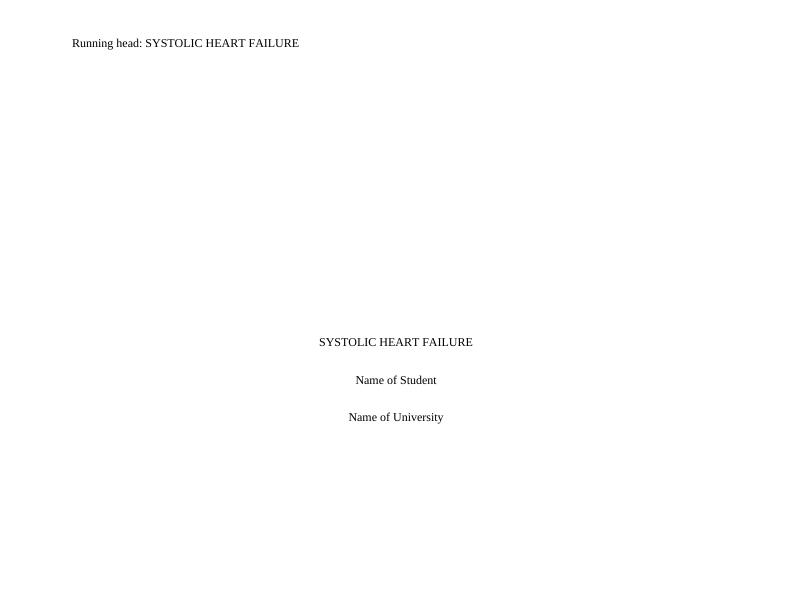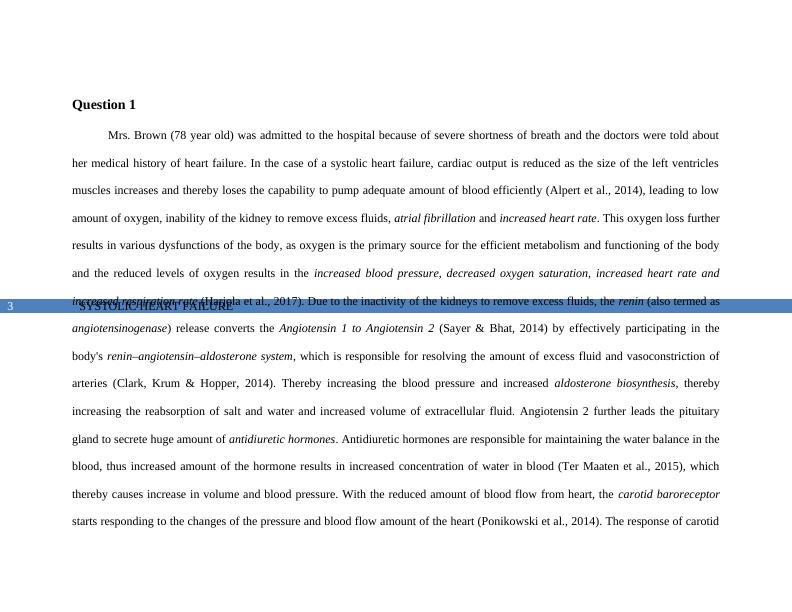Systolic Heart Failure Report 2022
Mrs. Brown, a 78-year-old patient with a history of heart failure, is admitted to the hospital due to severe shortness of breath. This case study explores the pathophysiology and complications of systolic heart failure.
11 Pages2894 Words19 Views
Added on 2022-10-13
Systolic Heart Failure Report 2022
Mrs. Brown, a 78-year-old patient with a history of heart failure, is admitted to the hospital due to severe shortness of breath. This case study explores the pathophysiology and complications of systolic heart failure.
Added on 2022-10-13
ShareRelated Documents
End of preview
Want to access all the pages? Upload your documents or become a member.
Drugs That May Cause or Exacerbate Heart Failure
|8
|2025
|23
case study-GUIDED QUESTIONS & CONCEPT MAP-1500 words
|1
|283
|54
Concept Map and Guided question response
|1
|306
|83
Pathophysiology of Chronic Systolic Heart Failure and Nursing Strategies
|8
|1854
|121
BIO 2402 - Pathogenesis Report | Left Sided Heart Failure
|9
|2451
|128
Systolic Heart Failure Answer 2022
|8
|2234
|28




